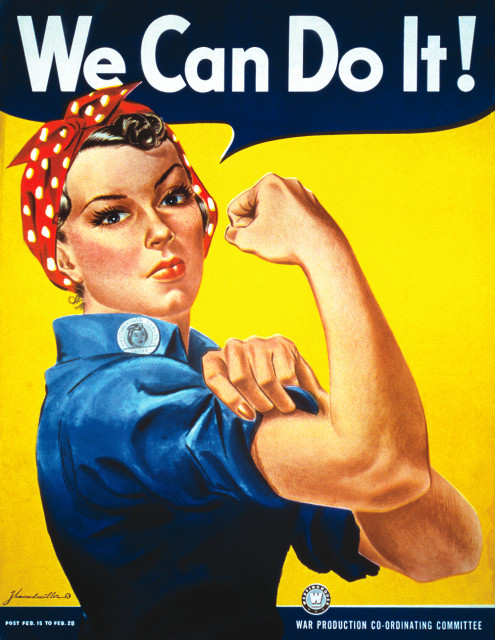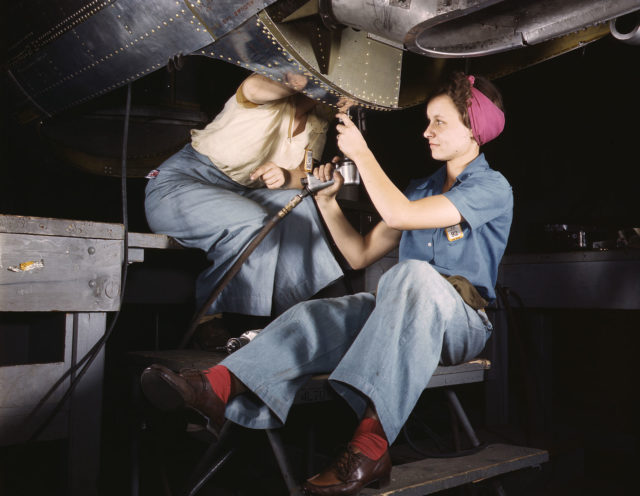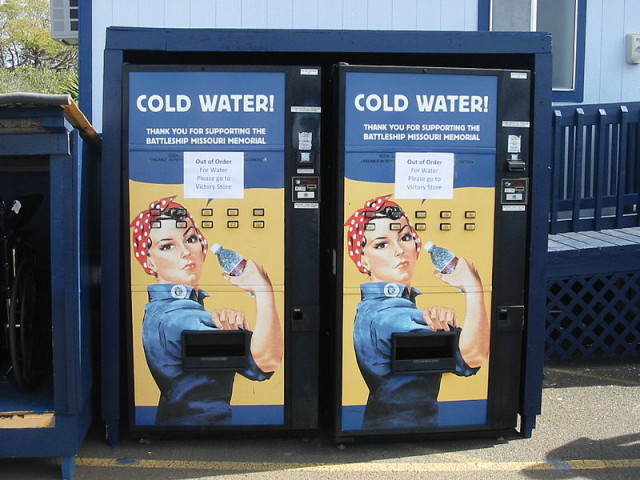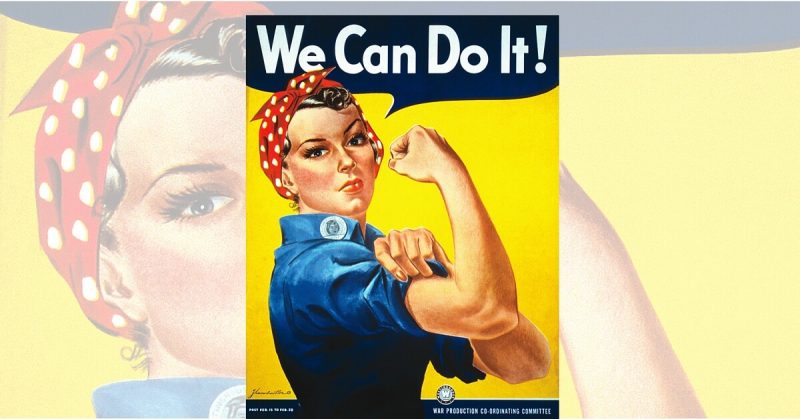POUTED lips, HIGH cheekbones, STRONG eyed and a SAUCY curls falling right from her polka dotted headscarf—ROSIE the RIVETER (as commonly or mistakenly known) is the most attractive war propaganda poster from the 1940’s WWII.
Exotic as she may look, the history behind the mythical lady is not at all glamorous— but deeply thought-provoking! Her journey started as an idea for increasing the morale of war goods producing workers but soon came to being perceived as an-only-women rights model.
WWII: A gospel about the ‘We can do it!’ Poster
1941: Pearl Harbor is attacked by the Japanese. The US government seeks an increase in its war goods such as missiles, tanks, and machines, etc. This creates pressure on war goods manufacturers leading to the low morale of workers. To boost teamwork, large factory owners decide to produce a series of propaganda posters showing how labor and upper management can work together and increase production.
1943: Looking at this trend, J. Howard Miller was soon hired to design posters for the same purpose. He was assigned to the Westinghouse Electric Company for this job. The poster was intended to be displayed for a short period of time in the factories and not seen as a sign of ‘women can do it’, but as ‘Westinghouse employees can do it!’
1980: World War II saw very little of the poster designed by Miller, and it was not almost 30 years later, that it was seen across America, duplicated in various forms. Interestingly, the ‘We can do it!’ poster gained popularity due to the symbol of a young, attractive, and a strong woman who was soon to be known as Rosie the Riveter and not the cover girl from the WWII poster.
The Curious Case of Rosie the Riveter

The lady in ‘We can do it!’ poster of 1943, or more famously known as Rosie the Riveter has been a case of disagreement for many years. The term Rosie the Riveter was coupled with various apparently fabricated stories.
The song: ‘Rosie the Riveter’ from the song with the same name was written by Redd Evans and John Jacob Loeb during 1942. The song portrayed a vigorous female labor during the American war production but was in no way associated with the cover girl in the poster.
The painting: It was certainly also not the famous painting in the Memorial Day issue of the Saturday Evening Post, by Norman Rockwell published on May 29th, 1943. Although the painting gained immense popularity from the time of its publication, till today, it was not connected to Rosie from the war promotional poster.
The name game: The most traditional belief attached to the name, Rosie was that the Westinghouse propaganda poster was in regards to women named or nicknamed Rosie. Nor was it to the women who came forward to show support and offer help for women working in the American war good production factories.
Little Miss Doyle: In 1984, one fine day this former American war goods worker by the name of Doyle, flipped through the Modern Maturity magazine, which contained a weird picture of the women from ‘We can do it!’ poster, and interestingly enough, the lady claimed to be the face behind the image. That said, she was widely appreciated and known to be the inspiration behind Miller’s muse. However, it was later discovered that the picture was a click of Naomi Parker working in WWII jobs in 1942.
The Rise of Rosie—A Feminist in the Making
The WWII propaganda image was soon out of sight after it first came out. It was not until 1982 that the ‘We Can Do It!’ poster was picked up by a magazine for reproduction purposes.
The following years, the poster was re-purposed to promote the concept of Feminism. Women around the world, or as you may call them, feminists, saw the image as an embracement of women power. The ‘we can do it!’ was now seen by women as ‘We Women Can Do It!’ The idea brought together all the females with a mutual agenda to fight gender inequality.
The view of Rosie the Riveter, after almost three decades, was very contrasting to the initial concept, which was: to boost employee morale, to encourage teamwork, control employees, and prevent unrest among workers.
In no time, the ‘We can do it!’ image was used to sponsor the idea of feminism and other constitutional issues arising in the 80’s. The overwhelmed response to the poster led it to bag the cover page of Smithsonian magazine to recall the times of WWII. Later in February 1999, it was reproduced to be first- class mail stamp image.

Today: WWII forgotten, Young Muscle Flexing Women Remembered
‘We can do it!’ is not cherished or honored for the initial cause it was illustrated for, it now is known for something else.
It is interesting to see how an image (art o painting) can instill different ideas and concepts from the perceiver. What was initially constructed to be used for workers during the WWII period is now a pop icon cultural image to signify women empowerment.
Many political figures of late have made use of the image, such as in the case of 2008 elections which saw the use of Rosie the Riveter banners, posters, and flyers used in the political campaigns of some famous women politicians like Hilary Clinton, Sarah Palin, Michelle Obama and Julia Gillard.
The journey of Rosie the Riveter from the darkness of WWII into a world of feminism highlights an ignored fact. It may sound appalling but it’s true— The ‘We can do it girl!’ was not a feminist fighting for gender inequality, as thought so, but ironically, women working in factories for producing war goods were often seen inferior to men, may that be in power, strength or status.

The perception that women today hold that the lady in the poster is actually on point for the working females in the historic times, that were forced to be second to men in the workforce, especially in terms of wages offered to women, which were not even the half of what men were paid—for the same job!
